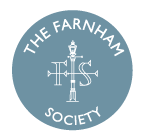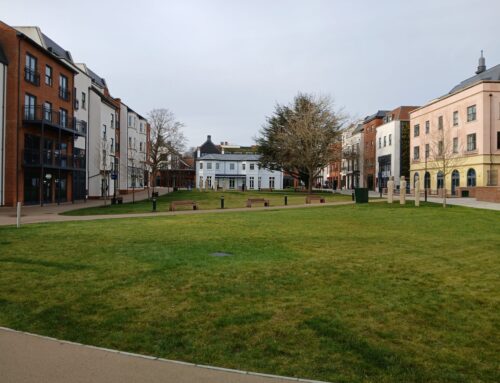Aldershot Military Museum is running a series of talks titled Rushmoor’s Remarkable Innovations.
Date and time
Saturday 10 September, 1100-1230
Title of event
Rushmoor’s Remarkable Innovations: Patrick Alexander and the Alexander Observatory
Quick summary
An illustrated talk which tells the fascinating story of the Alexander Observatory and its donor, Patrick Alexander, by Eric Grieve of the Farnham Astronomical Society. The observatory was given to the Army in 1906 and remains in full working order.
Full details
The Alexander Observatory is one of the more unusual buildings in Aldershot, a small round building with domed roof on Queen’s Avenue, close to the Cambridge School and at the centre of the original Aldershot Garrison. It is named after Patrick Young Alexander (1867-1943), who was active in early aeronautics, meteorology and science in general. He gave his 1891 Grubb 8 inch refracting telescope and its observatory to the Army. This presentation looks at Alexander’s career and why he came to make this remarkable gift to the Aldershot Garrison. The capabilities of the instrument and the use made of the observatory since its opening will be detailed.
This talk is one of a series on ‘Rushmoor’s Remarkable Innovations’ over the Heritage Open Days weekend of 10-11 September.
The Alexander Observatory is used and maintained by the Farnham Astronomical Society. It will be open to visitors on Saturday 10 September, when members of the Society will be present to show visitors the building and telescope, explain its workings and answer all questions. Let us all hope for a clear sky!
Location
Aldershot Military Museum, Queen’s Avenue, Aldershot, GU11 2LG.
Date and time
Saturday 10 September, 1400-1530
Title of event
Rushmoor’s Remarkable Innovations: Aldershot – Cradle of Army Signalling
Quick summary
An illustrated talk on the role of Aldershot in the development of Army signalling and communications. The presentation is by Noel Moss, who served with both the Royal Engineers and the Royal Signals.
Full details
Aldershot has been involved with Army signalling from its early days immediately after the Crimean War and there have been signal units in the garrison ever since. Initially the responsibility of the Royal Engineers, their first specialist telegraphy troop, and later their Telegraph Battalion, were based in the garrison. In 1886 the Army School of Signalling was set up in Aldershot and continued here until the First World War. On the formation of the Royal Signals in 1920 Mons Barracks was built specially for them and from there signallers deployed in the Second World War.
This presentation tells the story of these events and shows how the evolving communications technology has been used innovatively to greatly improve the command and control of field forces. The speaker is the current Chairman of the Aldershot Branch of the Royal Signals Association.
This talk is one of a series of events on ‘Rushmoor’s Remarkable Innovations’ at the Aldershot Military Museum over the Heritage Open Days weekend of 10-11 September.
Location
Aldershot Military Museum, Queen’s Avenue, Aldershot, GU11 2LG.
Date and time
Sunday 11 September, 1100-1230
Title of event
Rushmoor’s Remarkable Innovations: Military railways in Aldershot
Quick summary
An illustrated talk by Roger Deason, local historian and author, on military railways in Aldershot, including Fell’s experimental railway of the 1870s and the Government Sidings, which served the garrison from the 1890s to the 1980s.
Full details
In the second half of the nineteenth century railways were of great strategic importance to the Army for transporting men, arms, stores and equipment. When railway engineer John B. Fell proposed an innovative light railway system which could be constructed quickly and easily, the Army agreed to trials of his system at Aldershot, the largest and most important Army camp in Britain. Fell’s remarkable experiment began in 1872 and, although attracting much interest, it proved a failure in the long term. However, railways remained vital to Aldershot garrison and in the 1890s its own sidings were constructed off the main line, using material originally intended for a military railway in the Sudan. This presentation tells some of the fascinating stories of military railway innovations and developments in Aldershot.
This talk is one of a series on ‘Rushmoor’s Remarkable Innovations’ over the Heritage Open Days weekend of 10-11 September.
Location
Aldershot Military Museum, Queen’s Avenue, Aldershot, GU11 2LG.
Date and time
Sunday 11 September, 1400-1530
Title of event
Rushmoor’s Remarkable Innovations: Cody the Innovator
Quick summary
An illustrated talk on the pioneer aviator Samuel Franklin Cody, the first man to make a powered flight in Britain at Farnborough in 1908. The speaker is Peter Reese, aviation historian and biographer of Cody.
Full details
Samuel Cody was an American cowboy who became one of Rushmoor’s most famous sons. He began his association with Rushmoor when he was appointed Instructor of Kiting at the Army’s Balloon School in Aldershot garrison where he worked on his man-lifting kites as vehicles for reconnaissance. When the Balloon School moved to Farnborough in 1905 Cody went with it and worked on an airship and powered glider before going on to build British Army Aeroplane No.1, which he first flew at Farnborough on 16th October 1908. After leaving the school he set up his own workshop to develop his aircraft. Cody’s remarkably inventive mind not only sought continuous improvement in his aircraft designs but also innovative uses for aeroplanes including aerial photography and air evacuation of casualties.
This presentation tells the fascinating story of an extraordinary character who was one of the most creative and far-sighted innovators of his era.
This talk is one of a series on ‘Rushmoor’s Remarkable Innovations’ over the Heritage Open Days weekend of 10-11 September.
Location
Aldershot Military Museum, Queen’s Avenue, Aldershot, GU11 2LG.


